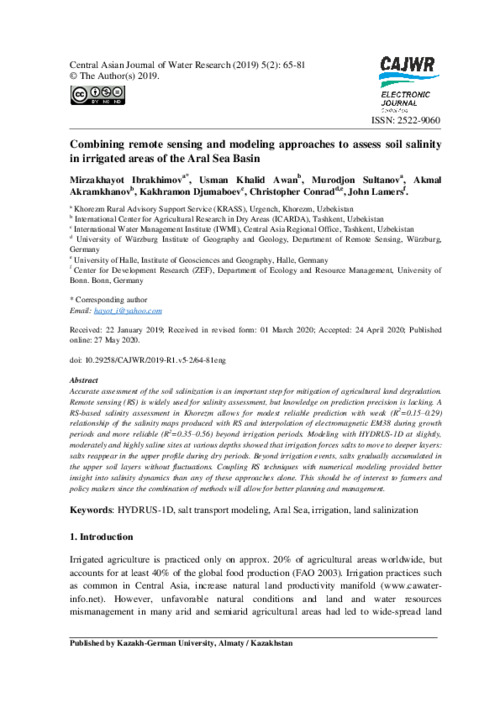Combining remote sensing and modeling approaches to assess soil salinity in irrigated areas of the Aral Sea Basin
Abstract
Accurate assessment of the soil salinization is an important step for mitigation of agricultural land degradation. Remote sensing (RS) is widely used for salinity assessment, but knowledge on prediction precision is lacking. ARS-based salinity assessment in Khorezm allows for modest reliable prediction with weak (R2=0.15–0.29) relationship of the salinity maps produced with RS and interpolation of electromagnetic EM38 during growth periods and more reliable (R2=0.35–0.56) beyond irrigation periods. Modeling with HYDRUS-1D at slightly, moderately and highly saline sites at various depths showed that irrigation forces salts to move to deeper layers: salts reappear in the upper profile during dry periods. Beyond irrigation events, salts gradually accumulated in the upper soil layers without fluctuations. Coupling RS techniques with numerical modeling provided better insight into salinity dynamics than any of these approaches alone. This should be of interest to farmers and policy makers since the combination of methods will allow for better planning and management

